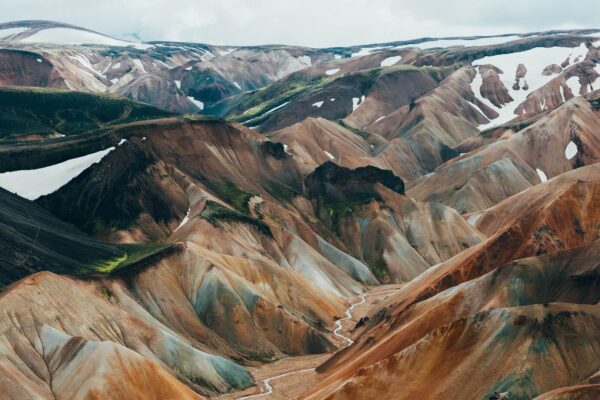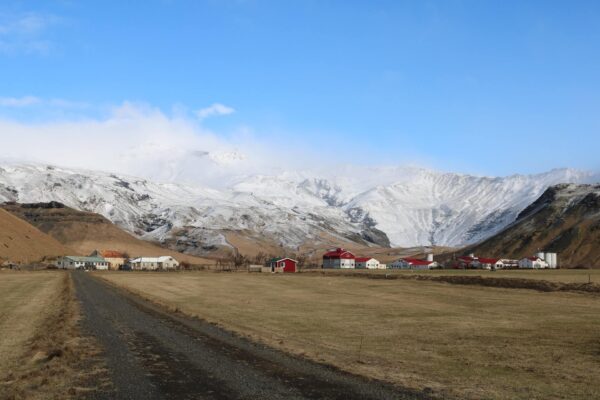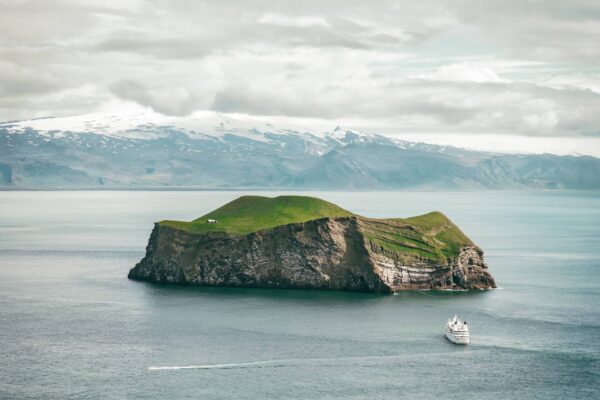Gullfoss means “golden waterfall” in English – probably because of the rainbows that form in the spray of the water masses, or because of the almost mystical atmosphere that envelops the waterfall at sunrise or sunset. Aptly named, it is located in the Golden Circle, the impressive area on Iceland where sights and attractions are lined up one after the other. Find out everything you need to know about the spectacular waterfall here.
What is Gullfoss and where is it located in Iceland?
Gullfoss, perhaps Iceland’s most famous waterfall, is a good three hours’ drive from Reykjavik. At 32 metres high and 229 metres wide, it offers an impressive natural spectacle when the masses of water thunder over two steps into the gorge of the glacial river Hvítá. It was formed at the end of the last ice age, when the ice masses melted and the water carved its way through the Icelandic landscape.

Gullfoss is located in the south-west of Iceland near the municipality of Bláskógabyggð and in the centre of the famous Golden Circle, where many popular Icelandic attractions are located. The Þingvellir National Park and the Haukadalur valley, a geothermal area with numerous geysers, are also very close to the waterfall.
Gullfoss: best time to visit the waterfall
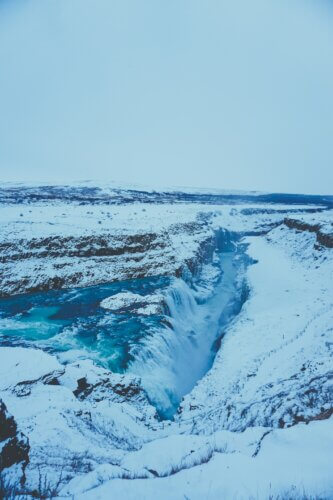
Of course, the summer months are generally the best time to visit Gullfoss – when the sun shines and the water sparkles with its spray, the surroundings are transformed into a seemingly magical and mystical landscape.
The roads and paths are also free of snow and ice in summer. Nevertheless, you should bear in mind that Gullfoss, like the rest of the Golden Circle, is one of the most popular tourist attractions in Iceland and is therefore extremely busy in the peak season from June to August.
It is therefore also worth travelling to Iceland in the off season. Although it is a little cooler then and there is a greater chance of rain, there are significantly fewer tourists travelling, so you can treat yourself to a little more time and peace and quiet at one of the attractions.
Winters in Iceland are also not as icy as in the other northern regions of Scandinavia, with temperatures hovering around freezing point during the day. In addition, travelling in winter is of course particularly suitable if you want to see the Northern Lights.
Activities at Gullfoss
Tours to Gullfoss – Golden Circle
As already mentioned, Gullfoss is part of the Golden Circle, a network of several popular attractions and sights in Iceland. The Golden Circle is one of the most popular tours and round trips as the sights are not too far away from Reykjavik and can be experienced in one day, while offering spectacular and breathtaking nature and beauty.
In addition to Gullfoss, the Golden Circle also includesÞingvellir National Park and Haukadalur. TheÞingvellir National Park is particularly interesting geologically – the North American and Eurasian plates meet here and the drifting apart of the two tectonic plates can be seen in several places, such as the Sifra Fissure. TheÞingvellir National Park also has great historical significance for Iceland – the Allthing, the third oldest parliament in the world, met here every June since the end of the land conquest around 930.
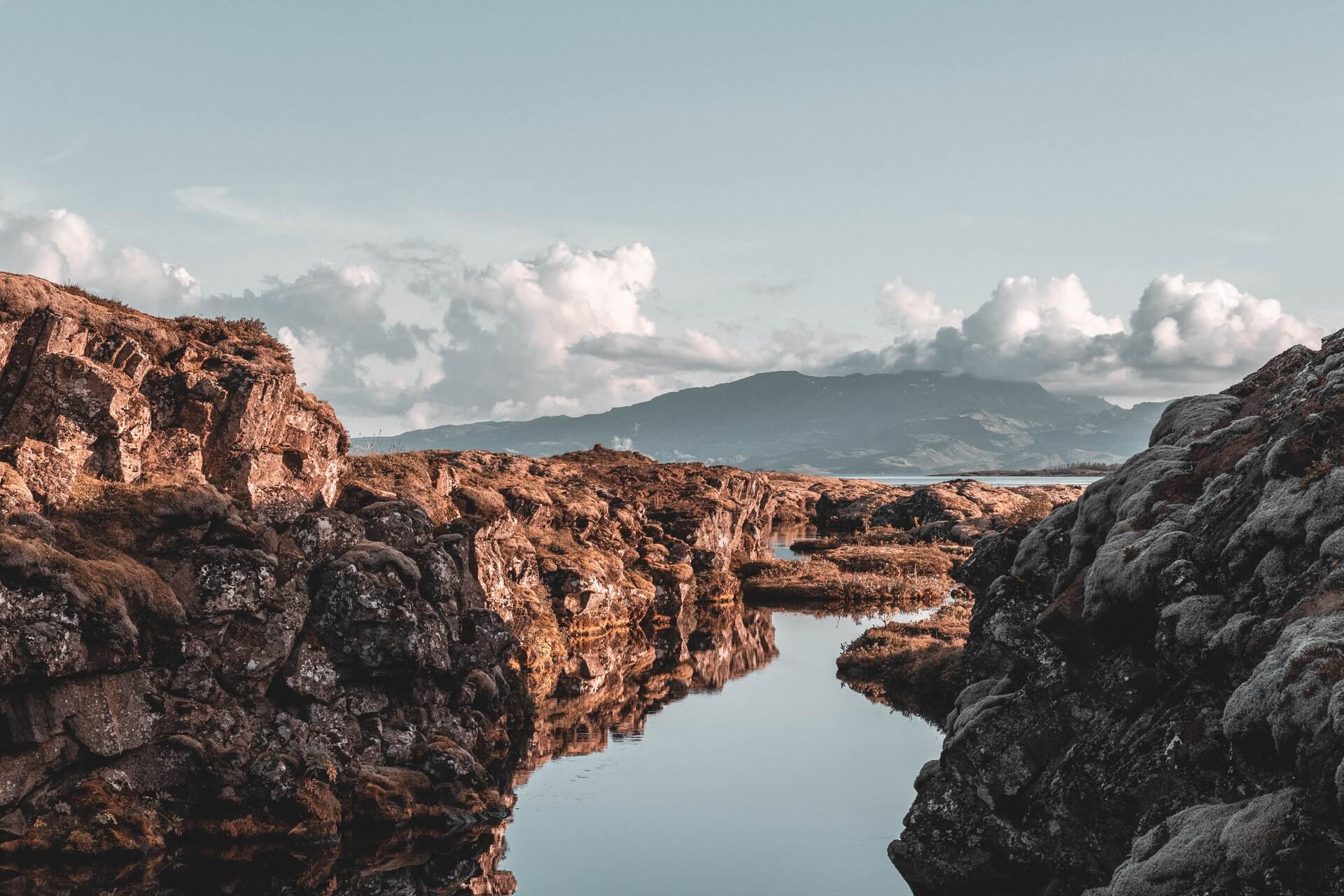
Haukadalur is a valley with very special geothermal conditions at the foot of Mount Laugarfjall. This is why there are numerous geysers here, including the Great Geyser and Strokkur. Strokkur is particularly popular with tourists as it erupts every ten minutes. In addition to the geysers, there are also other hot springs, such as Blesi, which is known for its bright blue colour.
Hike to Gullfoss
The starting point for an excursion to Gullfoss is the car park on road 35. The first path to Gullfoss leads through the gorge along the river Hvita. You climb down a staircase over the cliff edge to the slope of the gorge and walk towards the waterfall on a path. The path ends on a natural rock plateau from where you can get a good view of the two steps of the waterfall – but beware of splashing water!
However, there is a second path to the waterfall. This one leads above the gorge so that you can not only enjoy the view of the vast Icelandic landscape, but also see Langjökull in the distance. You are also safe from water up here and the path is often less busy than the first option.
There is a visitor centre with a souvenir shop and a café at Gullfoss. By the way – you can find everything you need for a trip to Iceland to be prepared for hikes through the wild nature on our Iceland packing list!
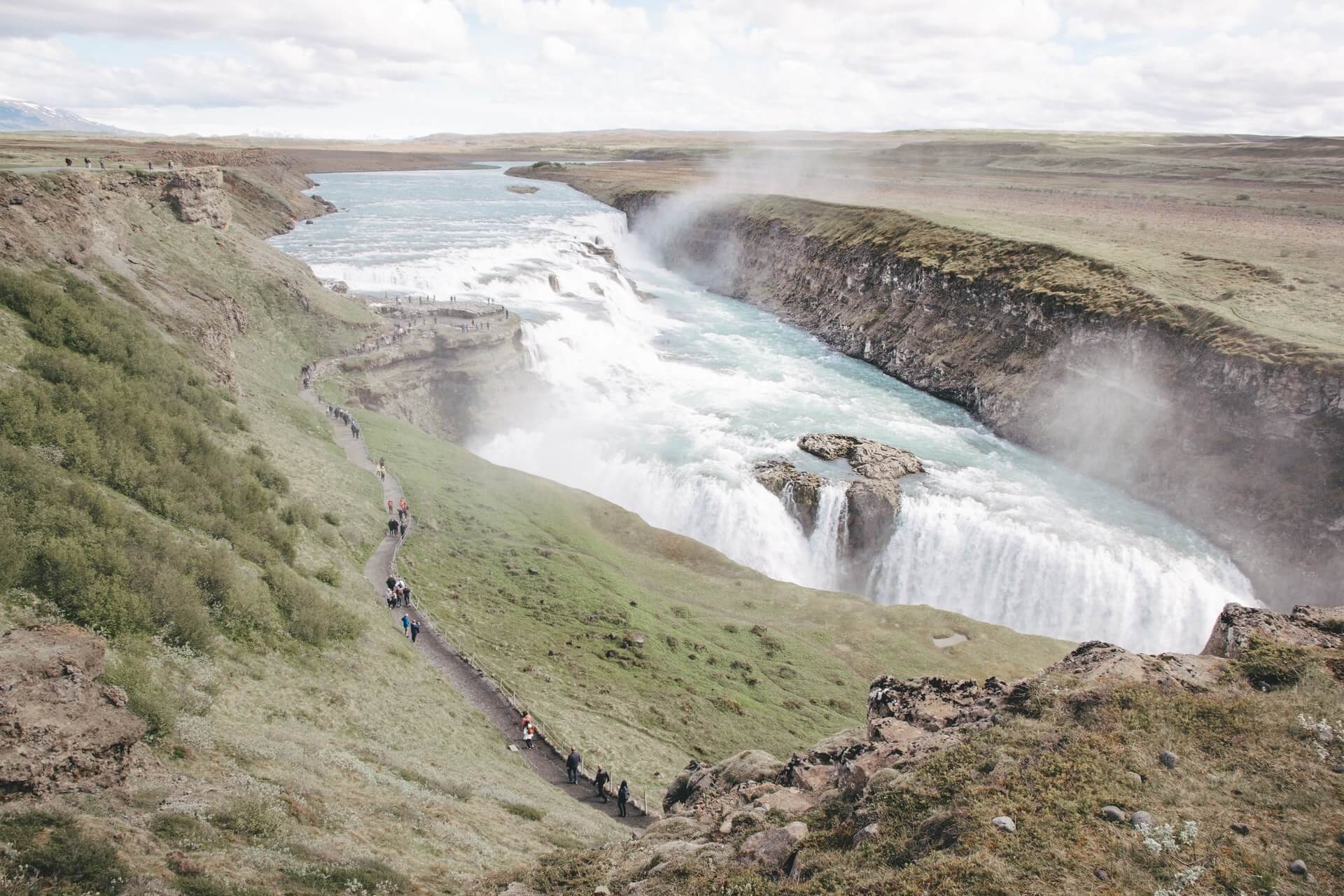
Accommodation at Gullfoss: hotels, camping and more.
There is no direct accommodation at Gullfoss and wild camping is not permitted in Iceland. However, you can stay overnight in Reykjavík if you only want to do a day trip to Gullfoss. Otherwise, there are a number of accommodation options in the Golden Circle area that are particularly suitable for tourists on round trips. These include hotels, cabins, holiday flats and campsites.
Travelling to Gullfoss
The best way to get to Gullfoss is from Reykjavík. You can either get there by plane or by ferry – which is more time-consuming and can be quite expensive depending on the destination, but also stops at the Faroe Islands.

You should then organise a hire car in the Icelandic capital, not only if you want to make a round trip through the entire country. Gullfoss can be reached via Hringvegur (ring road 1) to Selfoss, where you change to Biskupstungnabraut (road 35). The car park from which you can hike to Gullfoss is also on this road.
